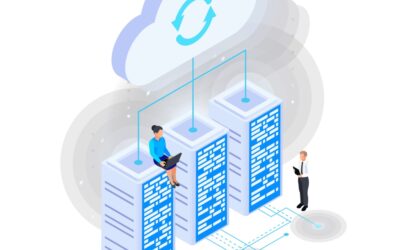New Delhi, September 21, 2022 — IBM unveiled the next generation of its LinuxONE server, a highly scalable Linux and Kubernetes-based platform, designed to deliver scalability to support thousands of workloads in the footprint of a single system. IBM LinuxONE Emperor 4 features capabilities that can reduce clients’ energy consumption. For example, consolidating Linux workloads on five IBM LinuxONE Emperor 4 systems instead of running them on compared x86 servers under similar conditions can reduce energy consumption by 75%, space by 50%, and the CO2e footprint by over 850 metric tons annually.
According to an IBM IBV study, 48% of CEOs across industries say increasing sustainability is one of the highest priorities for their organization in the next two to three years. However, 51% also cite sustainability as among their greatest challenges in that same timeframe, with lack of data insights, unclear ROI, and technology barriers, as hurdles. For these CEOs, scaling their business with modern infrastructure can often be one of the barriers to achieving sustainability goals.
“Data centers are energy intensive, and they can account for a large portion of an organization’s energy use. But data and technology can help companies turn sustainability ambition into action,” said Marcel Mitran, IBM Fellow, CTO of Cloud Platform, IBM LinuxONE. “Reducing data center energy consumption is a tangible way to decrease carbon footprint. In that context, migrating to IBM LinuxONE is designed to help clients meet their scale and security goals, in addition to meeting sustainability goals for today’s digital business.”
IBM LinuxONE Emperor 4 is an engineered scale-out-on-scale-up system designed to enable clients to run workloads at sustained high density and increase capacity by turning on unused cores without increasing their energy consumption and associated greenhouse gas emissions.2 In addition, clients can track energy consumption with IBM Instana Observability on LinuxONE.
IBM’s portfolio of sustainability technologies includes solutions to design, deploy and manage energy-efficient infrastructures and innovations with a hybrid cloud approach. IBM LinuxONE is one solution within the portfolio designed to optimize data centers by reducing energy consumption and improving energy efficiency. IBM LinuxONE Emperor 4 will be generally available globally on September 14, 2022, with entry and mid-range systems to follow in 1H 2023.
Respond to unpredictable demand
Shifts in the global economy have driven volatility and require flexibility in operational and technical decision-making. Built with the same security, scalability and reliability that has been the hallmark of IBM infrastructure, the next-generation LinuxONE also offers cloud-like flexibility. With a system built for rebalancing of resources in combination with on-demand capacity, workloads can scale-up and scale-out dynamically and non-disruptively.
“For CIOs, change is happening at an unprecedented rate and requires organizations to invest in infrastructure that is stable, high value and energy-efficient,” said Bjorn Stengal, IDC Global Sustainability Research and Practice Lead. “IBM LinuxONE provides organizations with a secured, scalable architecture to meet their government regulations and customer expectations.”
At Citi, the bank’s sustainability strategy is driven by a commitment to advance solutions that address climate change and support the transition to a low-carbon economy. Operationally, Citi is focused on reducing the environmental footprint of its facilities, including through improving hosting densities with lower power consumption. Citi is hosting MongoDB on IBM LinuxONE, leveraging the platform’s security and resiliency, as well as elastic capacity to address unexpected demand.
“As our business grows and becomes increasingly digital-first, traditional IT solutions add more physical servers and increase required floor space,” said Martin Kennedy, Managing Director, Citi Technology Infrastructure. “IBM LinuxONE with MongoDB provides vertical scale and critical protection against data breaches and cyber-attacks, helping optimize data centers while lowering our overall carbon footprint.”
Sustainable without compromising security
The new LinuxONE system also features pervasive encryption to protect data at-rest and in-flight, a priority for clients in regulated industries such as financial services. Building on IBM’s cloud security leadership in confidential computing, IBM LinuxONE Emperor 4 protects data in use while providing end-to-end encryption. This comprehensive data protection profile provides businesses with a data protection strategy that underpins current and anticipated future cyber security protocols.
Hybrid cloud platform for cloud and on-premises workloads
Today’s hybrid and multicloud environments require clients to deploy workloads where it makes the most sense for their business needs. IBM Cloud Hyper Protect Virtual Servers provide a public cloud environment in which the cloud tenant maintains complete authority over Linux-based virtual servers for workloads that contain sensitive data. Built on IBM LinuxONE and running on IBM Cloud, this service provides customers complete authority over their encrypted data, workloads and encryption keys – not even IBM as the cloud provider has access.
IBM LinuxONE Emperor 4 supports a large number of Linux and Red Hat OpenShift-certified workloads, including data serving, core banking and digital assets. IBM LinuxONE Emperor 4 receives support from IBM Ecosystem partners, such as Clari5, Illumio, Metaco, Mo
With cloud-native development on LinuxONE, teams of developers can deliver portable and agile solutions without having to learn a new operating system. IT managers need a system that is easy to operate that supports common tools and provides a foundation for the future. LinuxONE enables managers to focus on delivering new services, instead of managing complexity across a vast number of servers. Based on Linux and Kubernetes, everyone benefits from open standards and an ecosystem that includes modern DevSecOps and cloud-native tools.
“Together, Temenos and IBM LinuxONE can help major banks move to a modern architecture in a safe, predictable and scalable way, while reducing total cost of ownership and meeting their ESG obligations,” said Philip Barnett, President of Strategy Growth at Temenos. “Temenos core banking running on the new LinuxONE servers can operate at a fraction of the cost of general-purpose servers and offer great scalability, resilience and speed to market.”








